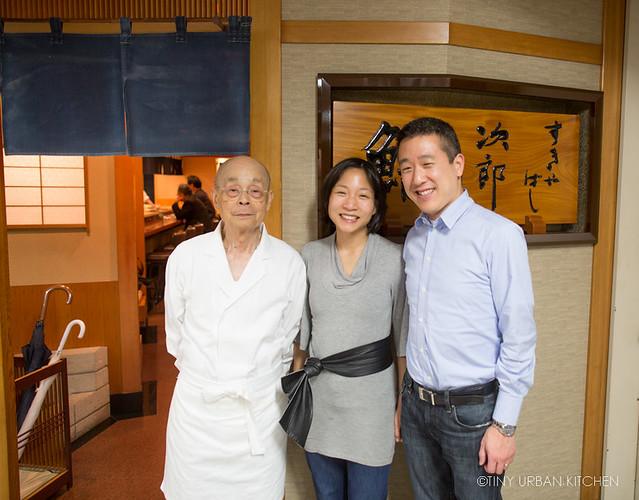
Japan is one of my favorite countries in the world. I fell in love with it when I lived in Tsukuba as a college during a summer internship. Since then, I've traveled back numerous times (usually tagging along on one of my husband's business trips). As a result, I've had quite a few opportunities to enjoy the fabulous food this country offers.
I've had enough friends ask my for recommendations about traveling to Japan that I thought I'd write a brief guide on my favorite places to eat, shop, and hang out.
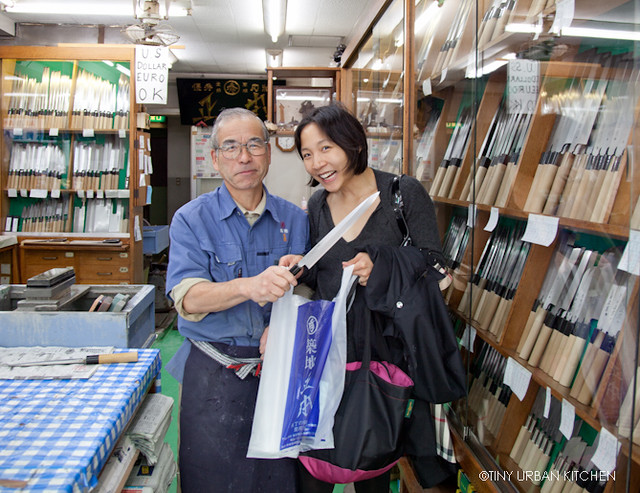
Where to Shop?
As a food person, my favorite kitchen shopping neighborhood is Kappabashi Dori and Tsukiji Fish Market (for knives!). At Kappabashi, which is the restaurant supply neighborhood in Tokyo, you can pick up tons of cool Japanese kitchenware for really low prices. Make sure to bring cash, as a lot of places don't accept credit card. This is also the place where you can buy plastic fake display food and gorgeous dishes for ridiculously reasonable prices.
Ginza is the ritzy part of town lined with high end boutiques. It is great if you're shopping for high-end stuff, but it's pricey! On Sundays they close down part of the street to traffic, so it's fun to walk and shop during that time. Harajuku and Omotesando (adjacent areas) are really fun too - you'll see a bit younger crowd, especially in Harajuku. One of my favorite shops in Omotesando is Kiddie Land, which has one of the best selection of Totoro stuff in Tokyo (even better than Studio Ghibli itself).
Shibuya is not too far away, and sometimes I'll walk from Shibuya to Harajuku and then to Omotessando. Between Shibuya and Harajuku is the NHK Studio, which has a fun shop that sells all sorts of Domokun stuff (Domo is their mascot).
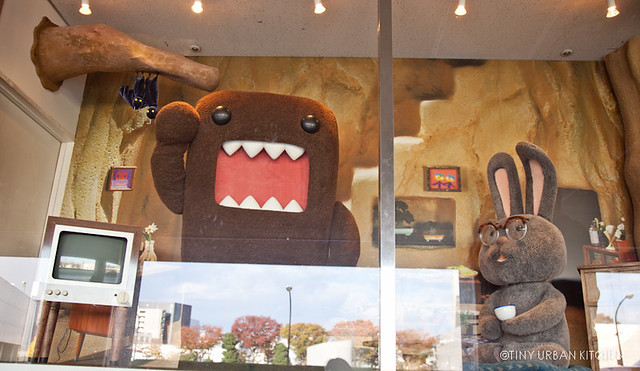
Bryan absolutely loves Akihabara for electronics. The largest electronics store (possibly in the world) called Yodabashi Camera is there. They sell everything from electronics to kitchen applicances to even luxury handbags. It's sensory overload but definitely worth seeing.
Akihabara is also not too far from Asakusa, where you can sample all sorts of fun Japanese snacks on the path leading to the huge temple (freshly made sembei crackers, red bean filled cakes, fresh mochi, etc).
Speaking of snacking, don't miss roaming around the basements of the high-end department stores (called depachika), where you can gaze at (and sample!) endless amounts of incredible food. Definitely check out the basement of the department store called Isetan in Shinjuku, which houses many of the world's most famous bakeries (yes, I buy a Pierre Hermes Ispahan macaron every time!).
Even if you can't make it out to Shinjuku, there are plenty of department stores in Shibuya, Ginza, and other areas with fun basements in which to explore. I would highly recommend grabbing lunch at least once from one of these places. You can also come back to purchase exquisitely wrapped food-focused gifts to bring back home. Nobody tops the Japanese when it comes to beautifully wrapped cookies, cakes, and other snacks as gifts.
Favorite Places to Eat
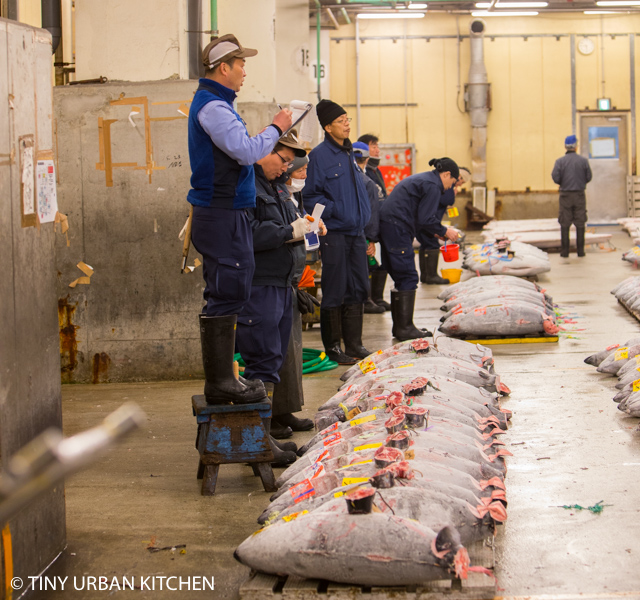
As for real dining - the options are endless depending on how much you want to spend. Definitely check out Tsukiji Fish Market and try to have super fresh and reasonably priced sushi there. I think Sushi Dai and Sushi Bun are the most famous, though lines can get long. I've personally never had the patience to wait at Sushi Dai, but even the other places are perfectly decent (we went to Sushi Bun instead, which was fine, but I actually think nearby Sushi Iwa, where we went a few years prior, is better, though more expensive).
If you have patience, you can line up super early in the morning (we arrived at 2AM) to watch the traditional sushi auction at Tsukiji Fish Market at either 5:30AM or 6AM (there are two shifts). The fish market's days are limited because it will soon move to a different location. They only let 60 people watch the auction per day, so if you're not in line by some time between 3AM and 4AM, they won't let you in. We lined up at 2AM for a post (!). To see our entire experience, check out this full post.
Favorite Tonkatsu (breaded pork cutlet)

Butagumi, which serves all sorts of different breeds on pork including tonkatsu made from the famous Iberian pig in Spain. It's a little off the beaten track, so if you're short on time, you can still enjoy excellent tonkatsu at Maisen, which has several locations around Tokyo.
Favorite Ramen
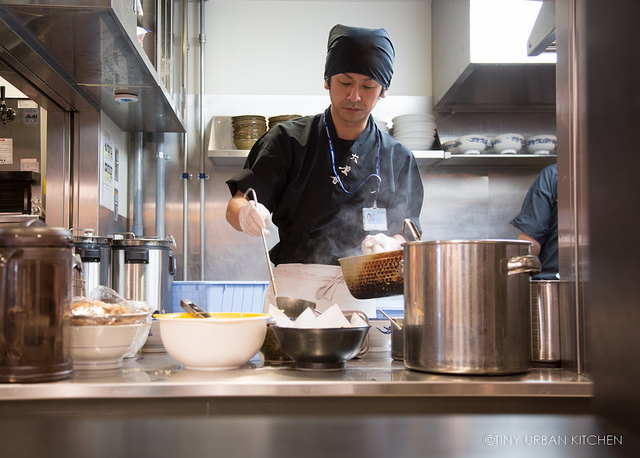
Rokurinsha has a history of having long lines out its door - which is a sure sign of a good ramen place in Japan. Visit the location at Tokyo Station on "Ramen Street" or go to the new Tokyo Sky Tree and enjoy it there. They specialize in "tsukemen", or dipping noodles. If the line at Rokurinsha is too long for your liking (it often has the longest line at Ramen Street), head over to Ramen Honda, which is still excellent. You can also go for breakfast, when the lines are only about 20 minutes long. For a lighter, yuzu-flavored ramen, try Afuri. For an authentic experience (no English menus!), check out this charming little ramen shop in Shibuya called Suzuran.
Favorite Tempura
Tempura Kondo in Tokyo boasts 2 Michelin stars and churns out the most delicate tempura using the freshest ingredients all over Japan. Try the sweet potato (even though it costs extra). This is supposedly one of the best items on the menu, though I haven't had a chance to try it since it was not in season when I went. Mikawa Zezankyo (1 Michelin star) is also very good, though I personally prefer Tempura Kondo just a tad.
Favorite Shabu
Seryna (Kobe beef) serves melt-in-your-mouth Kobe beef for shabu. Though it's extremely expensive (think over $100 USD for about 8 slices of beef!), it's by far the best shabu meat I've ever had in my life.
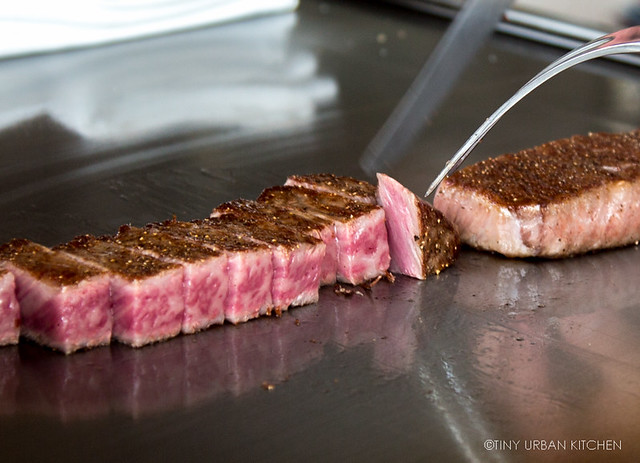
Favorite Steak/Teppanyaki
Ukai-tei is a beautiful and elegant 1 star Michelin restaurant with superb service and excellent steak. They offer steak from specially bred black cows from a region very near Kobe. According to Bryan, it's the best steak he's ever had in his life. The steak standwiches from Shima are also legendary. The catch is that you can only get a sandwich as a take-away after dining in the restaurant and ordering a steak. It's worth it, though, the steaks are phenomenal!
Favorite Sushi
I love Sushi Ya and the prices are very, very reasonable during lunch. Legendary options include Sushi Mizutani (now closed) and the famous Sukiyabashi Jiro (very hard to get in). We got our Jiro reservation by having one of Bryan's Japanese colleague contact the restaurant to make the reservation. They had to follow up by personally delivered the 20,000 yen cash deposit to the restaurant. Update: one of my readers informed me that Jiro accepts credit card now (2014). I would confirm this with your hotel, but it's possible that our crazy cash-filled reservation is a thing of the past.
Favorite Izakaya
One of my favorite casual izakayas where I discovered my love of yuzu kosho and tried chicken sashimi for the first time is this family run restaurant called Kago, founded by a retired Japanese baseball player.
Favorite Noodles
We haven't explored soba too much, but the handmade ones at Kaoriya, Matsugen, and Matsuya Kanda are excellent. We loved the udon at Omen, a charming noodle shop in Kyoto within walking distance of the Silver Pavilion, one of the most famous temples in Kyoto.
Favorite Kaiseki
Previously, my only experience with kaiseki was at Kikunoi Akasaka (1-Star Michelin restaurant whose uber famous sister restaurant in Kyoto has three Michelin stars), which was excellent. We've now visited Kyoto (birthplace of kaiseki, really), and have enjoyed many incredible meals. Nakamura, though pricey, is one of those unforgettable kaiseki meals with exquisite service, fantastic food, and an overall unique and very traditional Japanese experience
And for something completely different: Try some of the modern, creative cuisine that's popping up all over Tokyo. Aronia de Takazawa serves extremely creative, whimsical, and beautifully (and sometimes unusually) plated food. They also have a large selection of Japanese wines, which is unusual. Ryugin is one of the most famous modern kaiseki restaurants in Tokyo. Boasting three Michelin stars, it has some really fantastic dishes (though at the end it wasn't my favorite restaurant). Tapas Molecular Bar is all out molecular gastronomy located in the top floor of the Mandarin Oriental in Tokyo. The views are breathtaking and the meal is fun, though the flavors of the dishes are only OK.
Enjoy the Season!
It's fun to eat the seasonal ingredients too. During my most recent trip in the fall, matsutake mushrooms and gingko nuts were in season, and I loved trying both in several different ways.
Listing of all Japan-related posts
{last updated January 28, 2022}
2019 Japan Trip
Easter in Japan - Trip Report (trip report)
Tempura Fukamachi Tokyo (tempura, 1 Michelin Star)
Disney Sea Tokyo
Sushi Ishiyama (sushi)
Imafuku Sukiyaki Tokyo (sukiyaki, 1 Michelin Star)
Il Ristorante Luca Fantin Tokyo (Italian, 1 Michelin Star)
2018 Japan Trip
Totoro, Fall Foliage, Tofu Kaiseki (trip report)
Potsura Potsura Izakaya (izakaya, bib gourmande)
Sushi Ya with Takao Ishiyama (sushi)
Tokyo Shiba Tofuya Ukai - Tokyo Tower (tofu)
Hakone, Akihabara, and only-in-Japan Experiences Crony Tokyo (modern, 1 Michelin Star)
2017 Japan Trip
Kyubey - A follow-up visit
Tsukiji Fish Market Auction & Sushi Bun Breakfast
Shima Steak Tokyo - The Famous Steak Sandwich
2016 Japan Trip
Sushi Ya (sushi, dinner)
Afuri (ramen)
Dominique Ansel (bakery)
Bird Land (yakitori, 1 Michelin star)
Bar High Five (cocktail bar)
Matsuya Kanda (soba)
2015 Japan Trip
Hiking at Mount Takao in Japan
Florilege (French, 1 Michelin star)
Sushi Harutaka (sushi, 2 Michelin stars)
Rokurinsha (ramen breakfast)
Azabu Kadowaki (Japanese, 2 Michelin stars)
Nakameguro Iguchi yakitori (中目黒いぐち) (yakitori)
Sushi-Ya (すし家) (sushi)
Shirohige's Cream Puff Factory - Totoro Cream Puff (bakery)
2013 Japan Trip
Matsugen (soba)
Sushi Iwa (sushi, 1 Michelin star)
Ramen Honda (ramen)
Ryugin (modern kaiseki, 3 Michelin stars)
Omen (udon)
Shouraian (tofu)
Dotonburi (Osaka street food)
Taian (grill, 3 Michelin stars)
Sushi Sho (sushi)
Nakamura (traditional kaiseki, 3 Michelin stars)
Sushi Taku (sushi, 2 Michelin stars)
Sushi Yoshitake (sushi, 3 Michelin stars)
2012 Japan Trip
Sukiyabashi Jiro (sushi, 3 Michelin stars)
Sushi Sawada (sushi, 2 Michelin stars)
Sushi Aoki (sushi, 1 Michelin star)
Kikunoi Akasaka (kaiseki cuisine, 1 Michelin star)
Mikawa Zezankyo (tempura, 1 Michelin star)
Ukai-Tei (teppanyaki, Kobe beef; 1 Michelin star)
Kaoriya (soba)
Rokurinsha (ramen)
Omotesando Koffee (coffee)
2011 Japan Trip
Post Quake Japan
Kago (Kagoshima cuisine)
Daisan Harumi (sushi)
Tempura Kondo (tempura, 2 Michelin stars)
Sushi Mitani (sushi)
Inakaya (robotayaki)
Aronia de Takazawa (modern cuisine)
Sushi Mizutani (sushi, 3-Michelin stars)
Kappabashi Dori (Kitchen shopping street)
Masamoto Tsukiji (Knife shopping)
2010 Japan Trip
Part 1: Kappabashi Dori (shopping)
Part 2: Tapas Molecular Bar (modern Japanese, 1 Michelin star)
Part 3: Suzuran (ramen)
Part 4: Matcha and Azuki Breads
Part 5: Masamoto Tsukiji Knives (shopping)
Part 6: Maisen (tonkatsu)
Part 7: Snacking in Japan (snacks)
Part 8: Sushi Kanesaka (sushi, 2 Michelin stars)
2009 Japan Trip
Everything I Learned About Sushi I Learned from My Mom . . . . And Kyubei (sushi, formerly 1 Michelin star)
Seryna (Kobe beef shabu)
Sometaro (okomokiyaki)
Maisen (tomkatsu)
Kyubey (sushi)
Suzuran (ramen)
